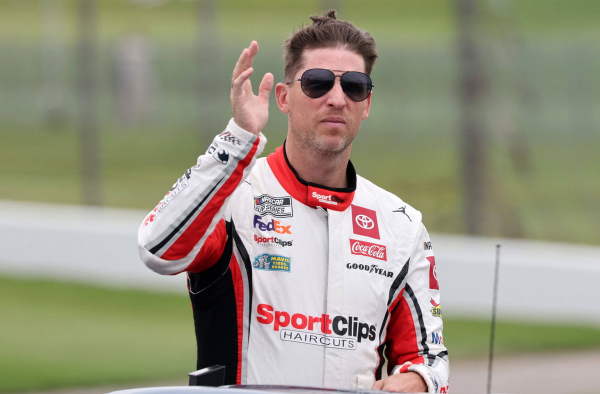It’s no secret that NASCAR cars have gone through plenty of changes over the years. From actual stock cars, pulled right out of the showrooms, to the Next-Gen machines that we see today, the sport has evolved over the years, bringing with it plenty of improvements in terms of performance and safety standards. While the older vehicles relied more on mechanical ingenuity and drivers’ skills, relying on single-source suppliers today means race strategy and tire management play a big role in the overall result.
Not all change is positive, though, and that’s a lesson Michael Waltrip learned the hard way. With aerodynamics coming to the forefront in the late 80s, smaller cars was a difficult reality to accept, but the Kentucky native was forced to come up with innovative solutions for the problems.
Waltrip’s suggestions changed NASCAR in the 80s
The late 80s were quite an era for NASCAR vehicles. The sport had just introduced template bodies, ensuring that every car had a uniform shape across manufacturers, not giving any team an undue advantage. Cars like the Chevrolet Monte Carlo and Ford Thunderbird became staples on the track, and restrictor plates were introduced to limit engine power, especially on superspeedways like Daytona and Talladega. However, the car sizes were also reduced for the sake of aerodynamics, a decision that did not go down well with Waltrip.
Reflecting on his struggles, Michael Waltrip said on Kevin Harvick’s Happy Hour podcast, “In ’88 they really shrunk. I went to Mr. France. I said, ‘Ya’ll about to squeeze me out of a job.’ There is no reason for these cars to be shrinking so much. They built a new car for me, and my head was above the row bar because of aerodynamics and what we were learning, and smaller was faster.”
Waltrip, who was on the verge of competing for Bahari Racing at the time, knew that the only way he could salvage his career was to come up with innovative solutions for his ongoing problems. He went on to tell Bill France Jr., “I would like you to mandate the chassis and make us put a body around it. If it’s bigger, great. That means more room for the stickers, for the decals, for the sponsors. Second, you ought to weigh the drivers with the car because it’s a disadvantage to me. Jeff Gordon, when he showed up, he weighed 100 pounds less than me. That’s not fair.”

The suggestions weren’t instantly accepted by the NASCAR CEO. Recalling the interaction, Waltrip said that Brian France Jr. told him, “Got a lot of stuff going on in NASCAR right now, we won’t get to this this year, but we’ll look at it next year.’” Thankfully, it all worked out in the end as Michael Waltrip went on to compete in the Cup Series until 2009, after which he made one-off appearances at the highest level before retiring for good in 2017. During that timeframe, he ended up winning the Daytona 500 twice, and was also a two-time Gatorade Duel winner in 2002 and 2005.
Michael Waltrip Racing also helped evolve NASCAR vehicles
Michael Waltrip’s influence on the development of NASCAR cars didn’t just come in the 80s, but also through his ownership and leadership at Michael Waltrip Racing. He founded the team in 1996 and broke into the Cup Series six years later, becoming one of the first teams to field Toyota Camrys in 2007. It was MWR that paved the way for a new manufacturer to enter the NASCAR fold, even though the move was considered very controversial at the time.
Michael Waltrip also ensured that MWR stayed ahead of the curve when it came to technological advancements, and went on to sign a partnership with Hyundai WIA America Corp. The move appeared to be a smart one, as it gave the team access to state-of-the-art vertical machining centers, which built critical components of the cars, giving the team a competitive edge.
The team also signed technical alliances with AF Corse and Prism Motorsports to share resources and expertise, which also helped develop NASCAR vehicles. The collaborations not only helped the exchange of chassis, engines, and technical support but also improved the overall safety standards and performance. While Waltrip will always be remembered for his two Daytona wins, his contribution to the sport was much bigger than what might meet the eye.
The post NASCAR Veteran Dissects Personal Misery Behind Bill France’s Welcome Overhaul appeared first on EssentiallySports.



